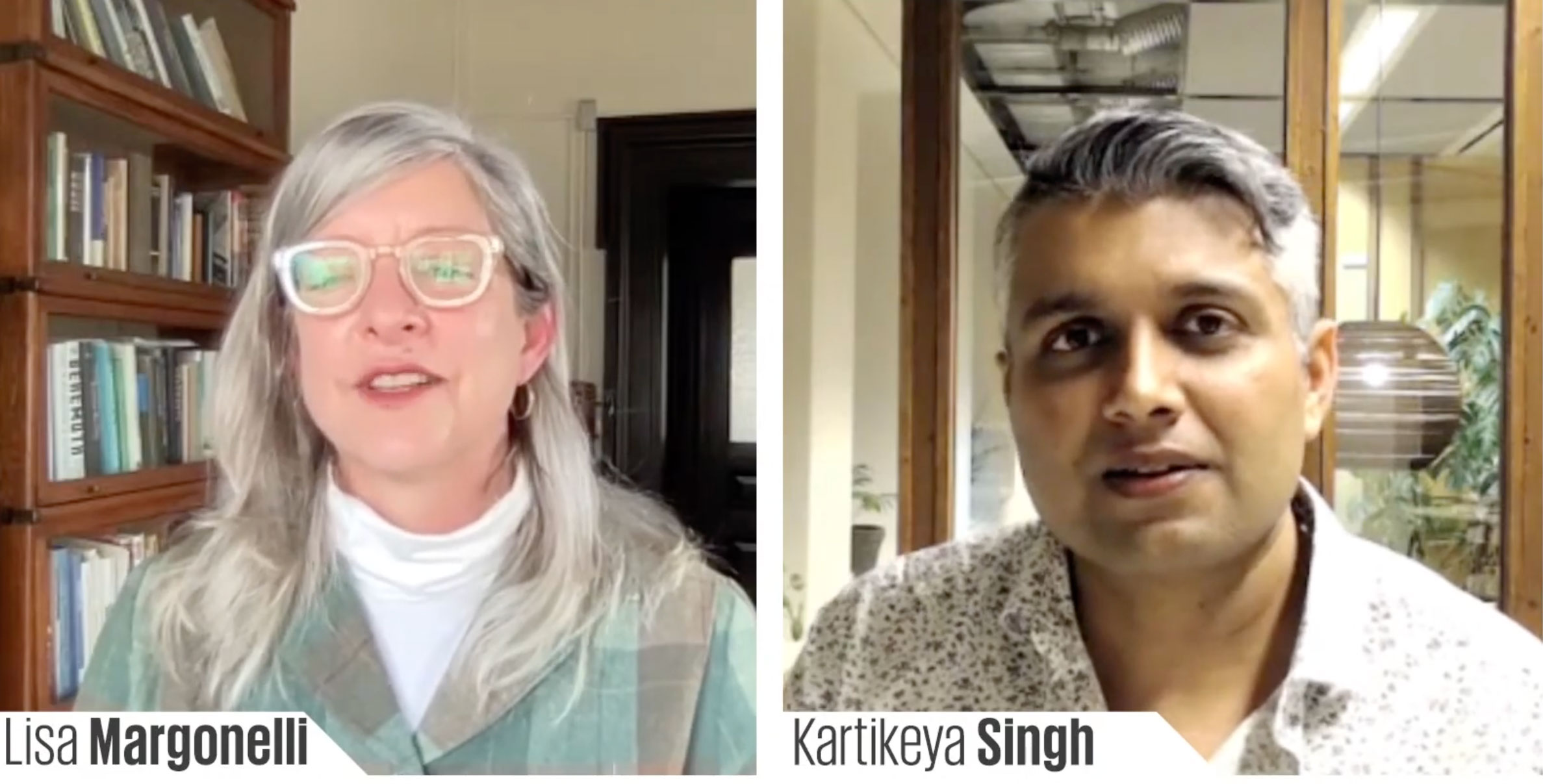
Issues in Science and Technology editor-in-chief Lisa Margonelli (left) is joined by senior associate at the Center for Strategic and International Studies, Kartikeya Singh (right).
Bureaucracies are often thought of as stiflers of innovation and growth. But the Indian government, one of the biggest bureaucracies in the world, has made some surprising gains in the fight against climate change. In November of last year, at the United Nations Climate Change Conference (COP26) in Glasgow, Prime Minister Narendra Modi committed India to net-zero emissions by 2070. But the country, and its energy bureaucracy, which was built around carbon-emitting energy, already has made large-scale advances toward sustainability.
How did India do it, and how might the country’s entrenched bureaucracy point the way toward cleaner energy futures around the world? Such wide-reaching advances change everything from daily commutes to the way people cook—change that seems likely to affect us all.
These were the big questions and ideas explored at a virtual Zócalo/Issues in Science and Technology event yesterday featuring sustainable development expert and SED Fund program director Kartikeya Singh, moderated by Issues editor-in-chief Lisa Margonelli. Singh, who is also the author of a recent Issues article on the subject, “Bureaucracies for the Better,” joined from his home in The Hague, and drew upon his extensive experience working with academics, policy experts, and ministries in India, his country of birth.
“In the last 15 years India has been transformed,” Singh noted. In 2006, while on a fellowship in New Delhi, Singh first saw the need for the nation to balance cleaner growth and energy poverty. “How could a country like India address climate change when 500 million people didn’t have access to electricity?” he asked. At the time, most electrification efforts focused on decentralized, community-level solutions—moving from kerosene to solar lanterns, from animal-powered to small, hydro-powered processes.
But Singh described a couple of major turning points. In 2018, India realized its goal of bringing electricity to 500 million more people, getting wires and poles to every home in the country. This “electrify everyone” campaign demonstrated the possibilities of harnessing the power of the larger government bureaucracy. “Perhaps,” Singh said, “we just need to change the mandate of that bureaucracy to become cleaner, more sustainable.”
That turning point followed a global one in 2017, when renewable energy became cheaper than coal. This, Singh explained, began a mass exodus from the coal-centered economy. Institutions, like the Ministry of Coal, locked into the coal-dependent energy sector were “left holding a bag of stranded assets and debt” he said. But rather than leaving these institutions for dead, Singh argued that their business plans need to reorient to cleaner energy. He sees an opportunity for big bureaucracies like the Indian government to use their breadth and infrastructure to deliver renewable energy instead of fossil fuels.
“How do you get a bureaucracy to do this?” Lisa Margonelli asked. It “requires political will to really mandate a pathway to transition,” Singh said. He predicted that in 50 years or so, such a pathway may take us to a point when a government agency for coal is obsolete—not just in India, but everywhere.
Ensuring that this clean energy transition is just, and that people don’t get left behind, is a challenge worldwide, from India to West Virginia. But Singh believes that India has a key advantage in this area because its energy sector is publicly owned and run. The government’s stakeholders are the people, and its responsibility is the welfare of those people. The state can also better handle pensions and absorb the costs of bankruptcy than privately owned enterprises. By contrast, CEOs do not take responsibility for what happens to their communities after bankruptcy.
Margonelli asked Singh to define and explain “intrapreneurialism”—his term for the creativity and innovation of government employees that is typically the sphere of businesspeople. Singh described a 2014 visit to the northeastern state of Assam’s Energy Development Agency. “Outside the agency building were relics of the agency’s past,” he said: rusted, cobwebbed solar panels and a demo wind turbine. But “the flurry of activity in the place was unbelievable,” he said. “There was a passionate group of committed staff working on [among other things] leveraging ponds and water bodies as a means to deploy solar energy. These people were one step ahead in mastering the changing energy transition.”
As the discussion came to a close, Margonelli prompted Singh to speak about how to reframe the mandates of big bureaucracies. Singh pointed to the pandemic, which forced the shutdown of the global economy and the subsequent unleashing of tremendous amounts of capital. “Every dollar spent matters more than ever. It should go toward building a more climate resilient society,” he said, with “less social unrest and more jobs.” The pandemic, he argued, truly did illuminate a need to “build back better.” And today, better energy sources are both cleaner and less expensive. “At the end of the day,” Singh said, “the cheapest electron should win.”




Send A Letter To the Editors